The radiant cut can be seen as a blend of the best features from three popular diamond shapes: round, Asscher, and emerald cut. It possesses the same dazzling brilliance as a round cut, the trimmed corners of an Asscher cut, and the elegant openness of an emerald cut.
The unique combination of these characteristics makes radiant cut diamonds highly appealing to individuals seeking a modern and distinctive style for their engagement rings.
If you’re in search of a brilliant-cut diamond engagement ring or simply want to explore more about this exquisite gem, you’ve come to the right place!
In this article, we will guide you in selecting a breathtaking radiant cut diamond and share insider tips to help you stay within your budget. Additionally, we’ll provide you with valuable advice on what to consider when shopping for this stunning gem.
Let’s delve into the fascinating world of radiant cut diamonds!
DESIGN YOUR OWN ENGAGEMENT RING: START WITH A SETTING OR START WITH A DIAMOND. IT’S REALLY UP TO YOU!
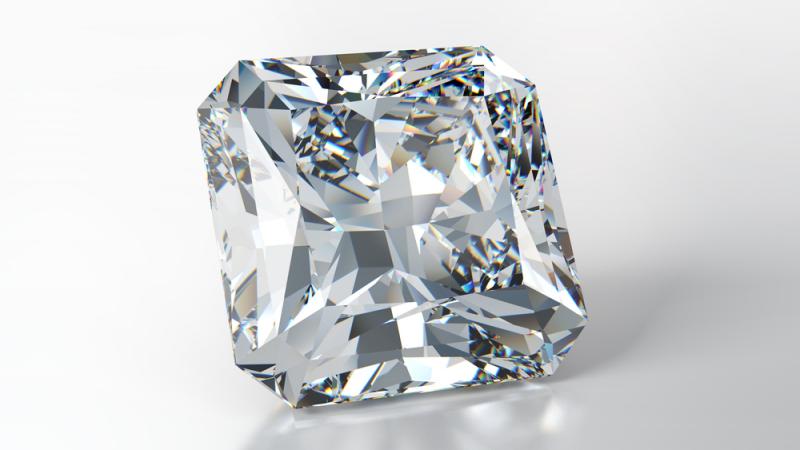
What Is A Radiant Cut Diamond?
The radiant cut diamond, which gained popularity in the 1980s, lives up to its name with its radiant and dazzling appearance.
Created by Henry Grossbard in 1977, the radiant cut combines the best features of round brilliant and emerald cuts. With 70 facets in its pavilion and crown, the radiant cut diamond exudes exceptional brightness and fire.
In terms of brilliance, only the round brilliant cut surpasses the radiant cut. It is an excellent choice for those seeking an engagement ring that sparkles with brilliance and fire.
The finely cut edges of radiant cut diamonds provide significant durability, making them ideal for individuals with an active lifestyle. These diamonds can be paired with both square and rounder diamonds due to their versatility.
Why are radiant cut diamonds considered hybrids? This stunningly symmetrical and non-traditional shape blends the brilliance of round cuts with the elegance of an emerald cut. The trimmed corners of the radiant cut allow it to shine in various types of jewelry, particularly engagement rings. Compared to princess cuts, the faceting of a radiant cut gives it a fiery appearance while maintaining delicate trimmed edges.
Another name for the radiant cut diamond is “the rectangular modified brilliant diamond.” These diamonds deviate from the more common round brilliant shape and belong to the category of hybrid gem cuts, which combine features of different stone shapes. Radiant cut diamonds are available in both square and rectangular shapes, distinguished by their width-to-length ratio. This diamond shape is also favored for fancy colored diamonds as it captures more of the raw diamond’s color.
It’s worth noting that diamonds with elongated fancy shapes, including the radiant cut, may exhibit a “bow-tie” effect. This effect appears as a black patch resembling a man’s bow tie that crosses the center of the diamond from right to left. It is caused by misaligned facets that result in light leakage. The severity of the bow-tie effect can vary from nearly invisible to significant, and it is typically more common in longer (more rectangular) radiant cut diamonds. While some bow-tie effects can add contrast to the diamond, severe cases may affect the overall beauty of the stone.
When choosing a radiant cut diamond, it is recommended to visually inspect the stone to assess the visibility of the bow-tie effect, rather than relying solely on the diamond certificate or measurements. A light bow-tie effect is generally acceptable, but if it becomes the dominant feature, it may impact the desirability of the diamond.
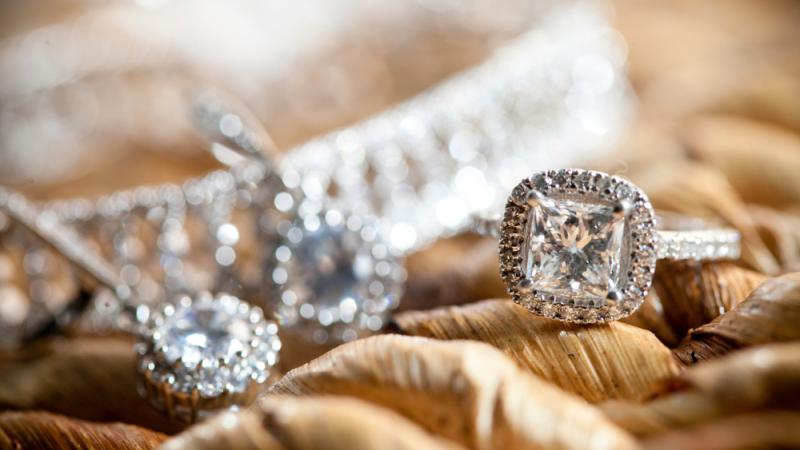
The Settings Of The Radiant Cut Diamond
Once you have selected a radiant cut diamond, the next step is choosing a suitable setting that complements the diamond’s cut. The most common and practical choice for an engagement ring with a radiant cut diamond is a four-prong setting.
Even in a six-prong setting, a radiant cut diamond with a high clarity grade will still dazzle beautifully. However, the four-prong setting specifically highlights the square or rectangular shape of radiant diamonds, making it an ideal choice.
While bezel settings can be used, they are not recommended for radiant cut diamonds. This is because the bezel setting encloses the center stone, providing a secure and unified feel. However, it also reduces the amount of light that reaches the gem, ultimately diminishing the ring’s brilliance. While personal preference plays a role, it’s important to consider that a bezel setting will significantly affect the diamond’s sparkle.
The size of the corners and the length-to-width ratio are important considerations for radiant cut diamonds. Similar to emerald cuts, radiant cuts can range from square to elongated shapes, and the length-to-width ratio greatly impacts the diamond’s aesthetic appearance.
The length-to-width ratio measures how close the diamond is to a perfect square. A length-to-width ratio of 1.00 indicates a completely square diamond, while a ratio greater than one signifies elongation. Most rectangular radiant cuts have a balanced length-to-width ratio ranging from 1.20 to 1.40.
The choice between a more square or elongated form of the radiant cut is a matter of personal preference. A more elongated shape may appear more prominent and elegant when worn, and certain setting designs can benefit from a square form. As long as the light performance of the diamond is not compromised, the length-to-width ratio ultimately depends on individual taste.
When it comes to the corners of a radiant cut diamond, they should be cut to a reasonable size. They should not be too large, as they would appear the same size as the sides, nor too small, as it would diminish the angularity that they add to the diamond’s overall shape due to the prongs that cover them. Striking a balance in corner size ensures the beauty and structural integrity of the radiant cut diamond.
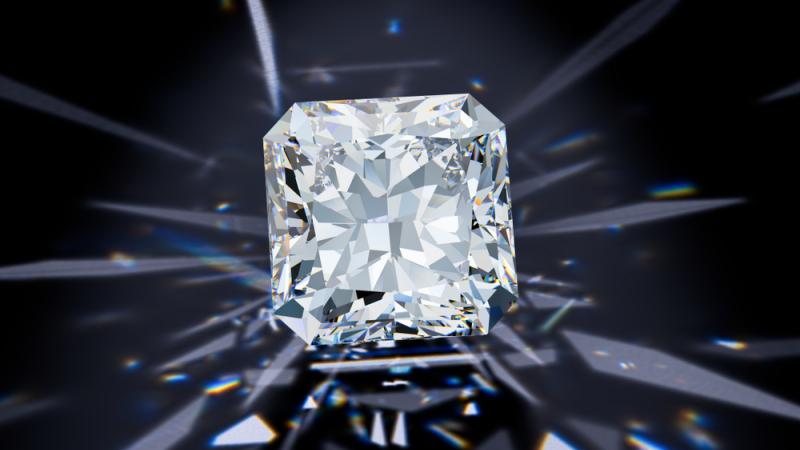
Color Grade Of Radiant Cut Diamond
A radiant cut diamond has the ability to highlight the wearer’s skin tone due to the longer ray pathways created by its facet layout. This captures more of the diamond’s body color, which is why many fancy color diamonds are shaped into radiants.
When selecting a round brilliant diamond, it’s recommended to consider a slightly broader color spectrum than usual. Round brilliants with excellent cuts reflect a significant amount of ambient light, masking some of the body color and appearing whiter than their color grade. However, radiant cuts have the opposite effect.
To find a radiant cut diamond that appears white, it’s advisable to choose from the higher end of the near-colorless range, around G-H. Colors in the I-J range and lower may start to exhibit a yellow tint.
In terms of clarity grade, radiant cuts have an advantage over emerald cuts as they can hide imperfections more easily. The quick scintillation patterns of radiant cuts make minor inclusions less noticeable. Therefore, visually appealing radiant cuts with lower clarity grades can often be found at significant discounts. It’s important to ensure that the inclusions do not negatively impact transparency, as this can result in a loss of brightness even with a high-quality cut.
The light performance of a radiant cut diamond, which encompasses its brightness, fire, and sparkle, is crucial in determining its unique beauty. Evaluating light performance can be challenging for non-experts, as it is not readily indicated on a GIA report. Additional diagnostics such as diamond photos, videos, and advanced imaging techniques like ASET can provide more insight into light performance. Reading ASET signatures on fancy shape diamonds, including radiants, requires practice. It is advisable to work with a vendor who can offer in-depth analysis and diagnostics to help understand these critical factors.
The “crushed ice” look is a characteristic of some radiant cuts, where certain parts of the diamond reflect direct light while others create a twinkling effect reminiscent of crushed ice. This appearance, which is also found in various cushion cuts, appeals to many customers due to its captivating sparkling appearance. However, in certain situations, these reflections can become less clear and appealing. The crushed ice effect is particularly noticeable in the center of a radiant cut, creating a sense of depth or a hall of mirrors.
Most certified radiant cut diamonds on the market have GIA lab reports that provide information such as carat weight, size, color, clarity, brilliance, symmetry grades, proportions, and identification. However, GIA reports do not offer a total cut grade. To obtain this vital piece of information, it is necessary to consult with an expert, evaluate enhanced light performance photos, study HD videos, view the diamond in person, or utilize a combination of these methods.
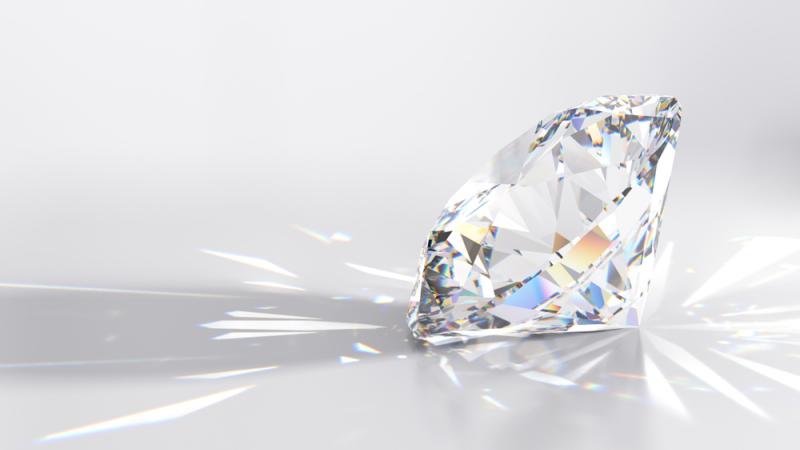
Radiant Cut Diamond Vs. Round Cut Diamond
The round brilliant cut has distinct optics that set it apart from the radiant cut, which features a mixed cut and offers good brightness. Even if a radiant cut diamond is highly square, it maintains its unique appearance and is unlikely to be confused with a round cut.
However, certain setting styles can mask these distinctions, which somewhat contradicts the purpose of selecting a distinct shape like the radiant cut. While a well-cut round brilliant optimizes brilliance, fire, and scintillation to a degree unmatched by other diamond cuts, this may not be the most crucial factor for every customer. Some buyers appreciate the angular design and more subdued sparkle of a radiant cut.
When comparing the radiant cut to the princess-cut diamond, which is the most similar shape, there are notable differences in aesthetic qualities. While both have rectilinear edges, the princess cut lacks clipped corners and has sharper corners that are often set into V-tip prongs. The princess cut exhibits uniform reflections that are slightly more dazzling, while the radiant cut’s mixed cut creates a crushed ice pattern with minimal erratic reflections and a glittering appearance. A square radiant may resemble a princess cut, especially with narrower corners.
In certain cases, the elongated shape of a radiant cut may give the impression of a larger size compared to an equivalent carat weight round diamond. However, this can be an optical illusion, as a radiant cut that is cut too deeply may hide carat weight and appear smaller. Additionally, if a radiant cut diamond has any light performance deficiencies, particularly around the periphery, it may appear smaller than one with better brightness. Cutters often use alternative rough stones and employ their creativity to maximize the value of polished diamonds from elaborate shapes, not solely focusing on light performance.
Regarding the price of radiant cut diamonds, they are generally priced lower than round brilliants of the same size and grade, as per trade norms for fancy-cut stones. Opting for a radiant cut instead of a round cut can result in cost savings. However, other factors influence the price of fancy-cut diamonds. A lower-priced radiant gem may have flaws that are not immediately apparent to the average diamond buyer. Since the GIA does not provide a cut quality rating for fancy shapes, cutters are not penalized for compromising light performance or dispersion. It’s important to compare pricing and seek guidance from a reputable seller who can offer in-depth diagnostics and recommendations to ensure a fair price for a quality diamond.
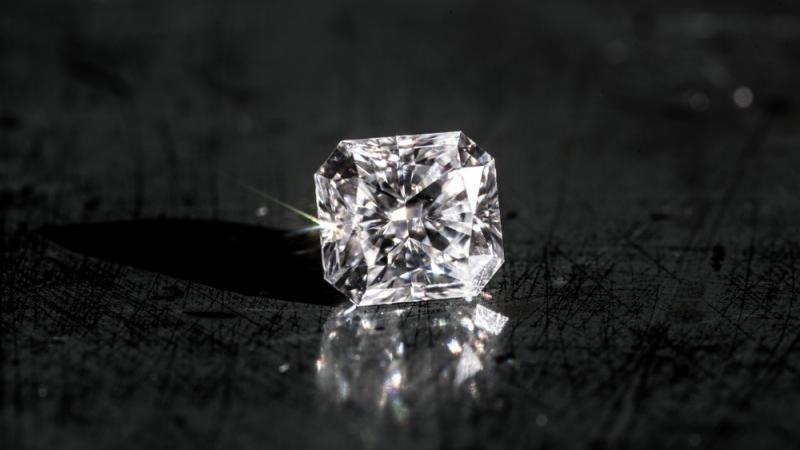
Final Word
Finally, if you desire a diamond that exudes breathtaking brilliance and catches the eye from afar, the radiant cut diamond is the perfect choice. Not only is the radiant cut diamond unique, but it also offers the advantage of being reasonably priced.
Before making a purchase, it is crucial to meticulously examine the cut quality, clarity, and color of the radiant cut diamond, ensuring its overall beauty and appeal. Seeking the assistance of a professional is highly recommended as they can guide you through the process and help secure a fair price for a magnificent diamond.


